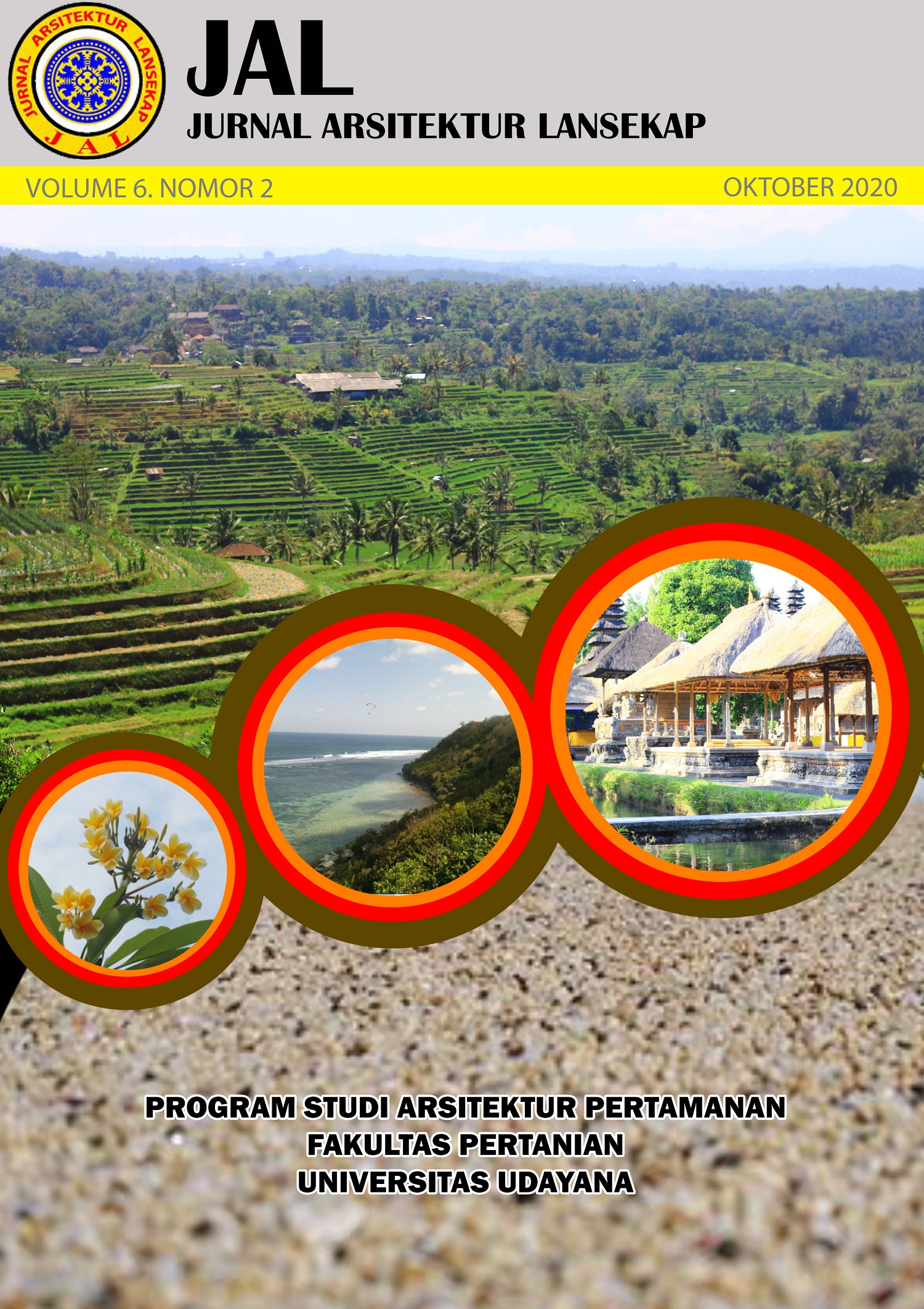Zonasi kawasan perkotaan berbasis mitigasi bencana banjir (Studi kasus Kota Denpasar)
Abstract
Urban zoning based of flood disaster mitigation (case study in Denpasar City). Denpasar City has been experienced a calamitous event such as flooding or inundating caused by development activities and topographical conditions of urban areas which prone to risk to flood disasters. Therefore, urban planning inDenpasar City needs to be handled by developing the concept of flood mitigation approach by considering the level of risk and the characteristics of the city of Denpasar. The purpose of this research was to developzoning concept in urban areas based on flood mitigation approach. The method used in this study wasoverlaying analysis and descriptive analysis. The results showed that the level of flood vulnerability in Denpasar city was increased from 59.62% in 2015 and reached to 61.24% in 2016. The trends caused by a
high rainfall during 2016 and was influenced by the hydrogeological characteristics, slope and land use change. Based on spatial analysis, the concept of flooding mitigation formed as follows: 1) high hazard zone(refers to the concept of disaster mitigation in a high hazard area); 2) Medium hazard zone (referring to the concept of disaster mitigation in medium hazard area); 3) Low hazard zone (referring to the concept ofdisaster mitigation in low hazard area). In conclusion it recommended that the government and thecommunity need to work together while maintaining the environment and monitoring the use of space in the urban area. Further research is needed related to hydraulic conditions so that results are more valid.
Downloads
References
Jaya, I.N.S. (2010). Analisis Citra Digital Perspektif Penginderaan Jauh untuk Pengelolaan Sumber Daya Alam. Fakultas Kehutanan Institut Pertanian Bogor.
Hermon, D. (2012). Mitigasi Bencana Hidrometeorologi: Banjir, Longsor, Ekologi, Degradasi lahan, Putting beliung, Kekeringan. Padang: UNP Press.
Pemerintah Republik Indonesia. (2011). Peraturan Presiden Nomor 45 Tahun 2011 tentang Rencana Tata Ruang Kawasan Perkotaan Denpasar, Badung, Gianyar, Dan Tabanan. Pemerintah Republik Indonesia. Jakarta.
Raharjo, P.D. (2009, Mei 29). Permodelan Hidrologi Untuk Identifikasi Daerah Rawan Banjirdi Sebagian Wilayah Surakarta Menggunakan SIG (Sistem Informasi Geografi). Retrieved September 22, 2016, from http://puguhdraharjo.wordpress.com/
Salain, R. (2015, April 23). Focus Group Discussion Analisis Banjir Kota Denpasar Denpasar. Retrieved April 1, 2019, from http://ppebalinusra.menlh.go.id/focus-group-discussion-analisis-banjir-kota-denpasardenpasar-23-april-2015.html
United States Geological Survey. (2016). Landsat 8 (L8) Data Users Handbook. Department Of The Interior U.S. Geological Survey. Retrieved August 12, 2018, from https://www.usgs.gov/landresources/nli/landsat/landsat-8-data-users-handbook
An author who publishes in the Jurnal Arsitektur Lansekap (JAL) agrees to the following terms:
- Author retains the copyright and grants the journal the right of first publication of the work simultaneously licensed under the Creative Commons Attribution-ShareAlike 4.0 License that allows others to share the work with an acknowledgement of the work's authorship and initial publication in this journal
- Author is able to enter into separate, additional contractual arrangements for the non-exclusive distribution of the journal's published version of the work (e.g., post it to an institutional repository or publish it in a book) with the acknowledgement of its initial publication in this journal.
- Author is permitted and encouraged to post his/her work online (e.g., in institutional repositories or on their website) prior to and during the submission process, as it can lead to productive exchanges, as well as earlier and greater citation of the published work (See The Effect of Open Access).
Read more about the Creative Commons Attribution-ShareAlike 4.0 Licence here: https://creativecommons.org/licenses/by-sa/4.0/.







